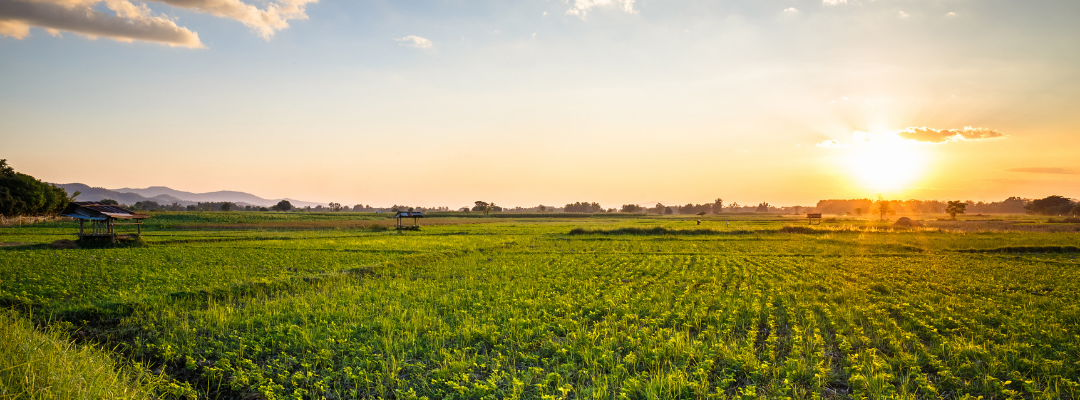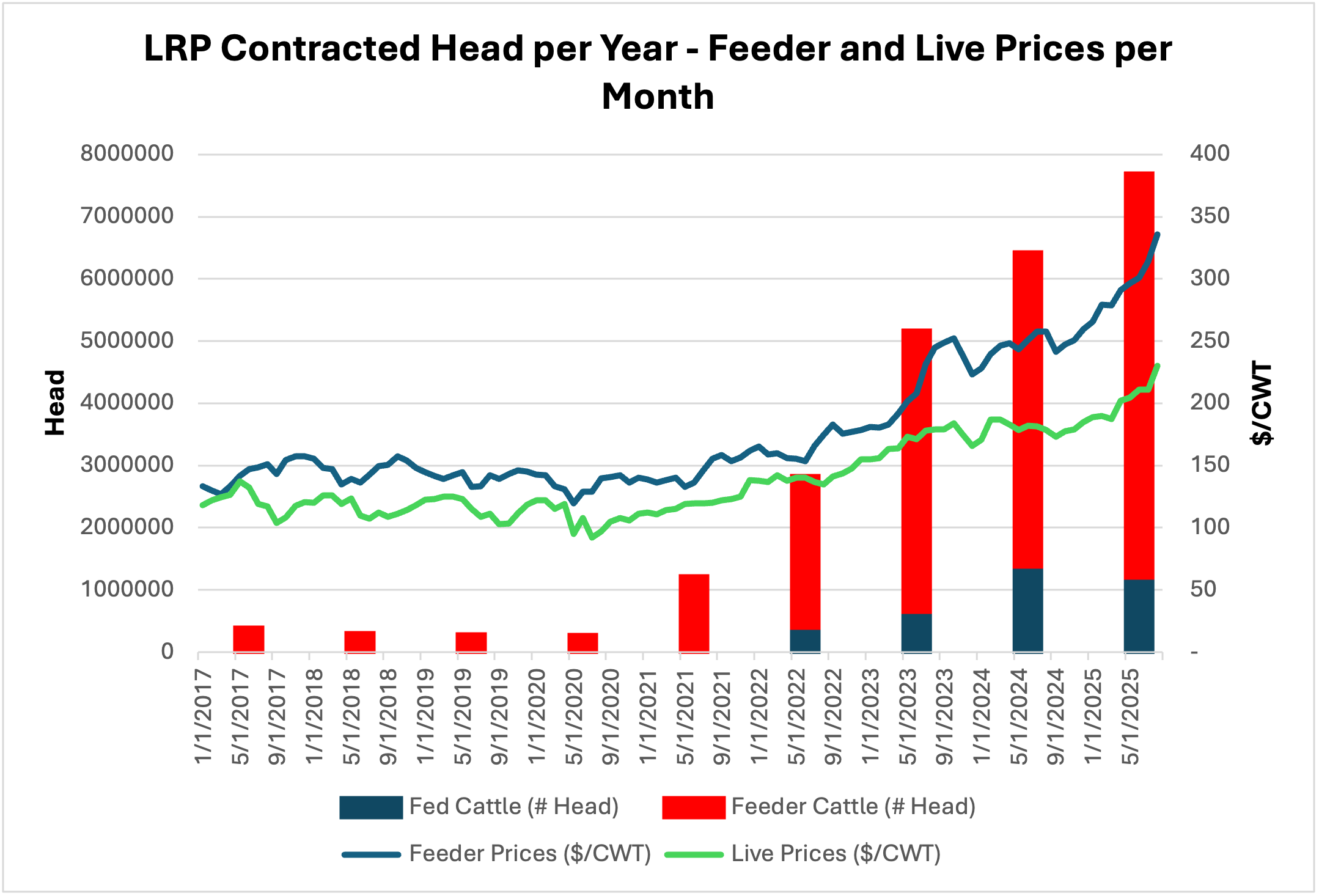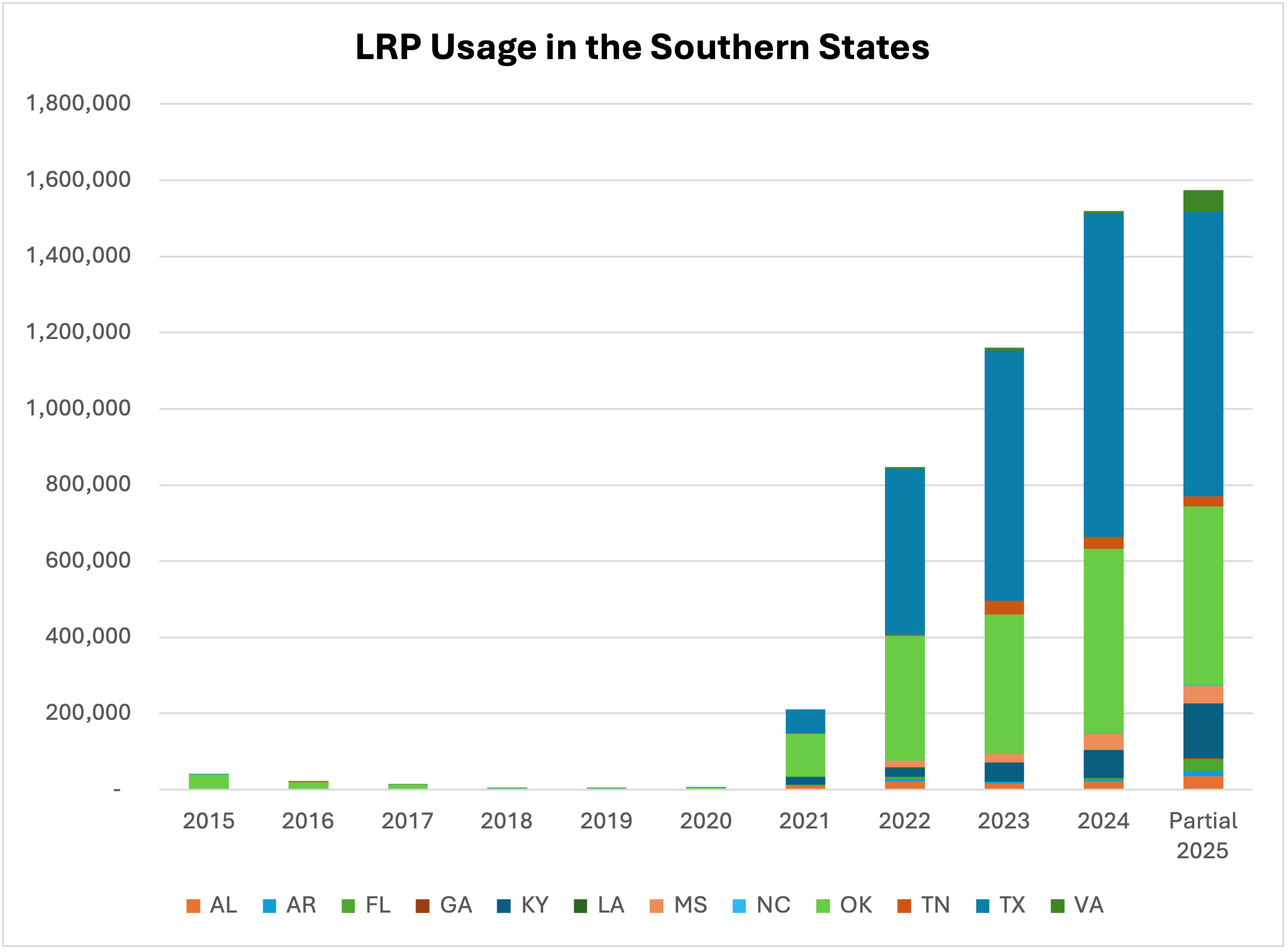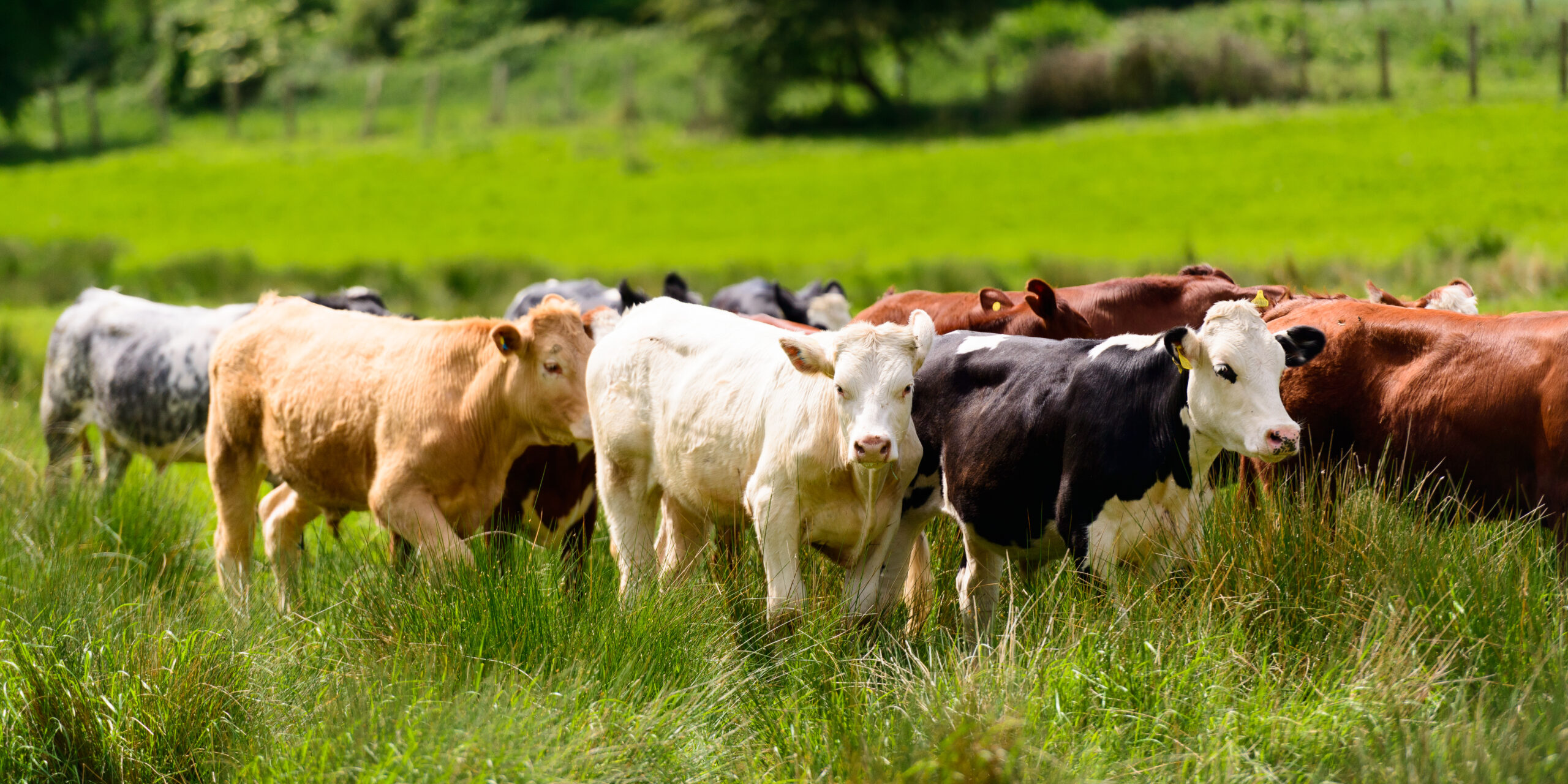As mentioned in previous Southern Ag Today (SAT) articles (Martinez and Ferguson 2022, Martinez 2023), monitoring Non-Real Estate Farm Debt provides insight into debt health. At the time of this article, harvesting is on many people’s minds, producers are baling hay, tariffs are a constant conversation, and livestock prices are at all-time highs. Last month’s reports offer the most recent snapshot of 2025 debt health. As a refresher, every commercial bank in the U.S. submits its quarterly Reports of Condition and Income, which are known as call reports. Within these call reports are totals of agricultural loans and the status (on time or late) of the loans. Figure 1 displays the total loan volume (yellow line) and loan volume for three late categories (30-89 days late, 90+ days late, non-accrual) for the last 17 quarters (4.25 years). The totals are for all the Southern Ag Today States.
In the first quarter of 2025, non-accrual (blue line) loans increased 80% from 2024 Q4. This makes the total amount the highest since 2021 Q4. Loans that are 90+ days late (grey line) remained relatively the same as 2024 Q4. The most concerning statistics are the loans that are 30-89 days late (orange line), which increased to $108.9 million in the SAT states. While this loan type seasonally increases in Q1, the amount increased 196% compared to 2024 Q4, and 146% compared to 2024 Q1. All states increased in these bad loan types, except for Louisiana (decreased by 20%). Due to the varying size of states, measuring the percentage of 30-89 days late loans compared to total loan volume is a good way to compare the SAT states and the impacts of these bad loan types. In 2024 Q1, the quarterly average of 30-89 days late loans to total loan volume was 0.3% (which is stable), with the highest being Oklahoma and Tennessee at 0.5%. In contrast, the 2025 Q1 quarterly average increased to 0.7% (which is still stable), with Alabama (3.1%) and Arkansas (1.4%) being the only two states above the average. For perspective, in 2024 Q1, Arkansas and Alabama were 0.3% and 0.1%, respectively, thus their 2025 Q1 measures lead to them not only increasing in bad loan types, but they are also the only states to have year-over-year increases above 1%. When comparing the percentage of total loan debt (non-accrual, 30-89 days late, and 90+ days late) compared to total loan volume, the quarterly average was 1%. Florida, North Carolina, and South Carolina were the only three states below 1%. Alabama (6%) and Arkansas (2%) were the only two states above the quarterly average. Total loans (yellow line) are down from the previous quarter, which is expected due to seasonal trends. Total loan volume was up 4% compared to 2024 Q1.
From a sky-high view, the 2025 Q1 reports provide an indication of overall debt health following a tough profitability year for many row crop operations, and a strong revenue year for livestock producers in the SAT states. The Q1 reports indicate that some states are in stable conditions, but there are some states that have signals of concern. The concern leans towards the row crop side. Price prospects for many row crop operations for the rest of the year, and moving into next, have limited upside potential due to abundant domestic and global supplies. Thus, government payments will play a role in these bank reports moving forward. Last year’s government payments will likely assist in lowering some bad debt in the 2025 Q2 reports and offset some Q1 bad debt. I would expect government payments from ARC and PLC to occur again for this crop year (will not be received until October 2026), but having two consecutive years of being in survival mode strains the balance sheets and cash flow for producers and many will need to begin working with agricultural lenders to secure credit for 2026 earlier than a typical year. In the coming months, it is crucial that producers are mindful of their working capital and continue the positive production and risk management strategies they have implemented thus far.
Figure 1. Non-Real Estate Farm Debt from 2021 Q1- 2025 Q1

References
Martinez, Charley, and Haylee Ferguson. “Current Non-Real Estate Farm Debt“. Southern Ag Today 2(30.3). July 20, 2022. Permalink
Martinez, Charley, and Parker Wyatt. “Current Non-Real Estate Farm Debt for Quarter 1 of 2025.” Southern Ag Today 5(36.1). September 1, 2025. Permalink







